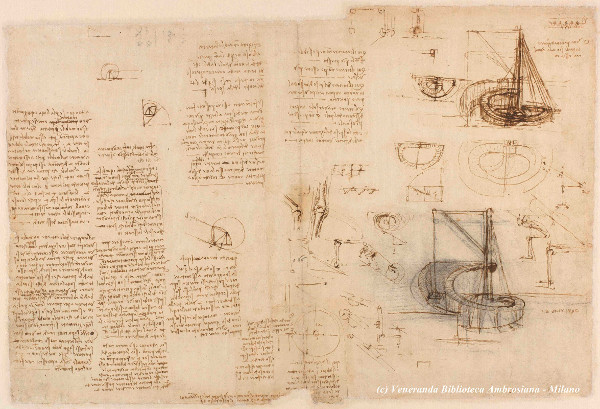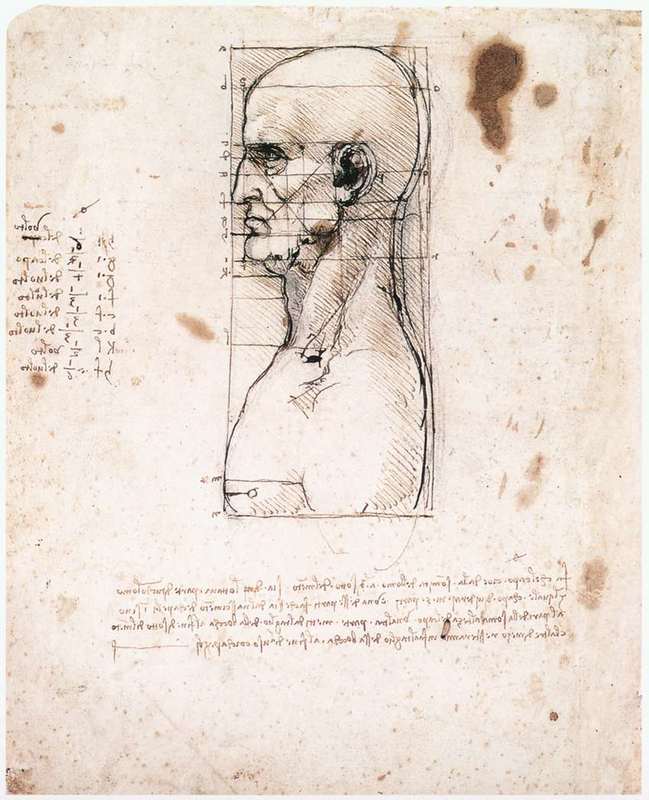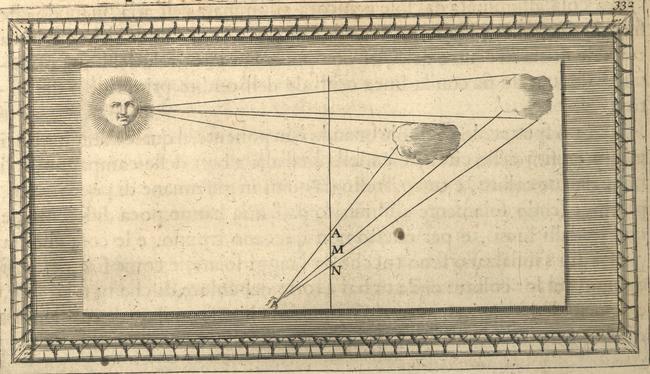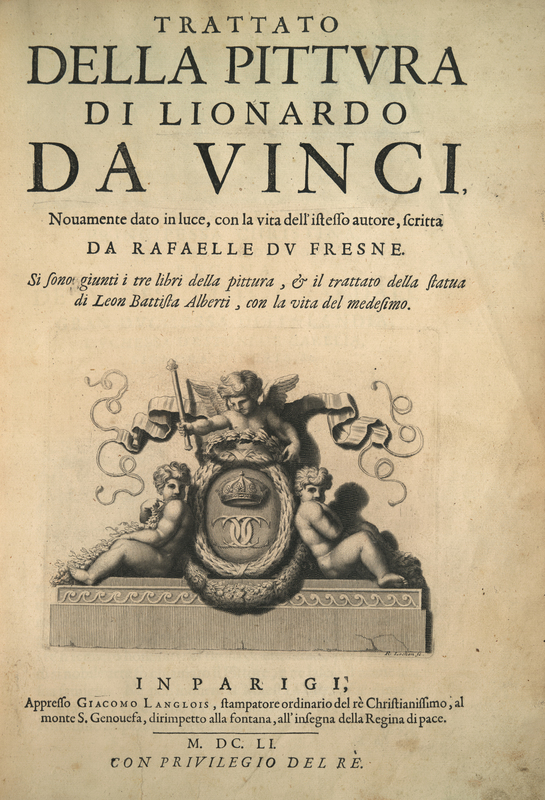Leonardo da Vinci
Leonardo da Vinci (1452-1519) is usually referred to as a Renaissance man, meaning he did work in many areas of study. After his passing in 1519, his notes with the heading "On Painting" were gathered by his pupil Francesco Melzi and turned into a treatise on painting (1). The main goal of the treatise was to argue that painting is a science. However, this was all just notes from Leonardo's notebook, not something he meant for the public (1). Using theories of optics and color perspective, Leonardo da Vinci's notes make clear the scientific elements used in painting to create more realistic images. We can see these theories implemented in Leonardo's paintings like The Last Supper. The treatise was very influential to scholars for years to come, specifically Matteo Zaccolini who studied Leonardo's works so extensively that he began to write in a similiar form of mirror script as him (1). For both Leonardo da Vinci and Matteo Zaccolini, perspective was the basis for the imitation of nature (2).
Leonardo wrote, "Those who are in love with practice without science [that is, theory] are like pilots who board a ship without ruder or compass, who are never certain where they are going. Practice ought always to be built on sound theory, and without it nothing is done well in painting" (1).
Citations:
1. Janis C. Bell, "Zaccolini's Unpublished Perspective Treatise: Why Should We Care?," Studies in the History of Art 59 (2003): 78-103. http://www.jstor.org.proxy-um.researchport.umd.edu/stable/42622655.
2. Elizabeth Cropper, "Poussin and Leonardo: Evidence from the Zaccolini MSS." Art Bulletin 62, no. 4 (1980): 570. A
The Last Supper is a painting by Leonardo da Vinci showing how his understanding of optics gave him the ability to create more realistic works of art. Through extensive studies of perception and reflection/refraction of light, Leonardo rejected known principles of optics and astronomy. The Last Supper is a perfect example of how Leonardo da Vinci's understanding of science and the natural world translated into his artistic practice. The shadows and slight variations of color and light, show his knowledge of science and dedication to the realistic depiction of nature. The work is said to have caused other artists to strive for more realistic renderings in still life images (1). This is due to Leonardo's precise and detailed treatment of light and shadow within the objects (and people) in the composition (1).
Citations:
Nicolas Bitler, "Leonardo Da Vinci’s Study of Light and Optics: A Synthesis of Fields in The Last Supper." Intersect, vol. 4, no. 1 (2011): 26-34.



